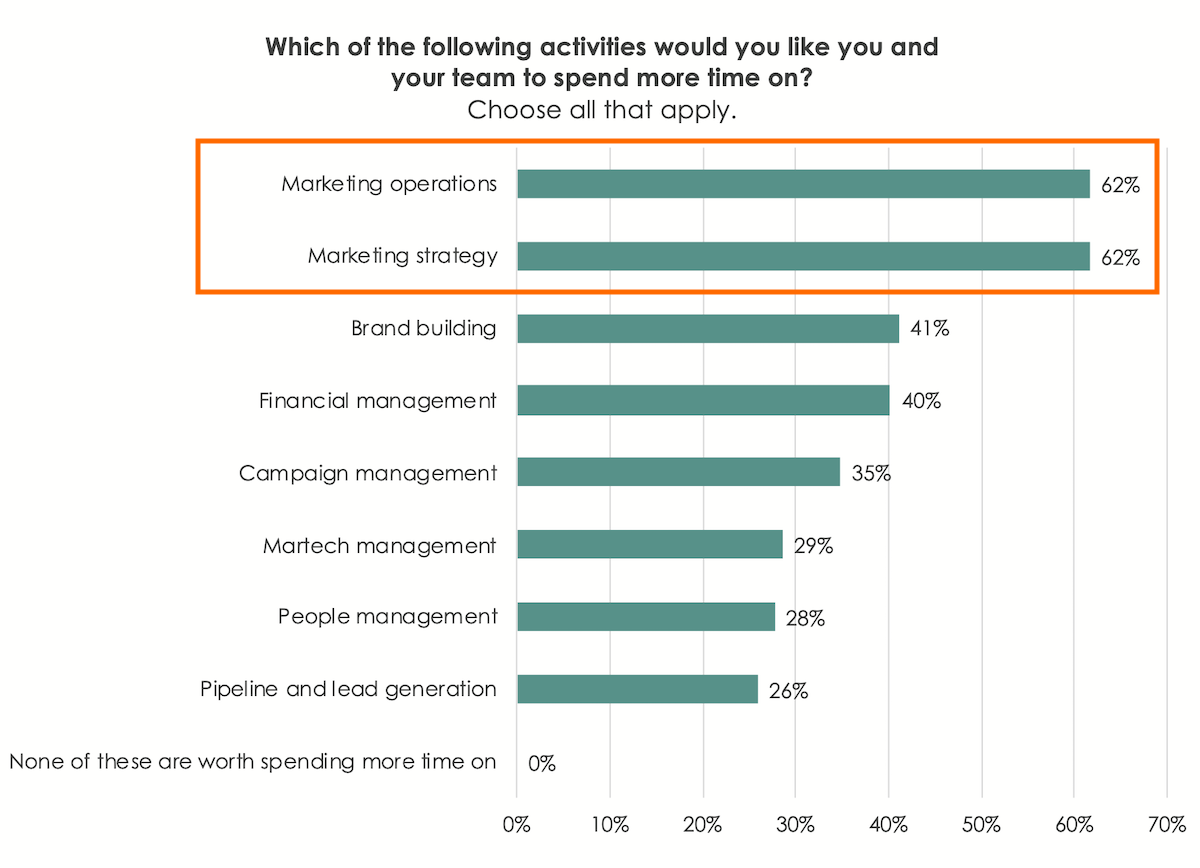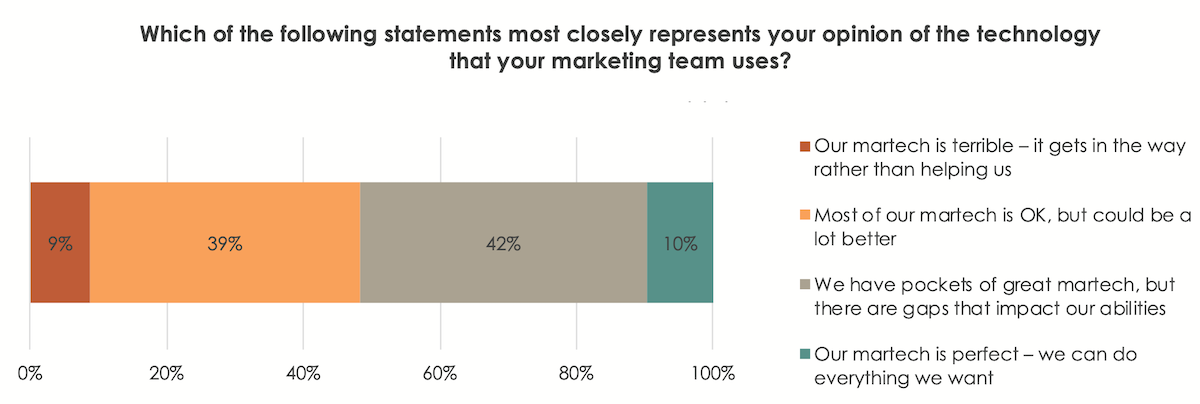The good folks at BrandMaker recently released a study of CMOs and their perceptions of The State of Marketing Operations.
In short, marketing operations has risen from being “an overshadowed marketing function that worked in the background to solve internal pains” to “an integral part of the marketing organization.” (And there was much rejoicing.)
70% of the CMOs surveyed reported that they have a dedicated marketing ops team at their company. 66% of those teams report into marketing (“Who’s buried in Grant’s tomb?”), while 23% are matrixed into both marketing and IT.
The chart at the top of this post caught my attention, asking CMOs to indicate which activities they would like to spend more of their time — and their team’s time — on. Tied at the top: marketing strategy and marketing operations.
That shouldn’t be surprising. If there are two overarching responsibilities for marketing leaders, they are (1) deciding on the right things to do and (2) doing them right. Strategy and operations. But I think it’s important that “marketing operations” is increasingly framed as an important, umbrella-like capability over individual execution motions such as campaign management, lead generation, and financial management. It enables and connects all of those activities.
I believe that reflects a maturing of thinking about marketing operations as a foundation of marketing’s house — not a garage attached to its side.
One of the lower priorities in the chart was also martech management.
I also think that’s placed properly in the hierarchy of marketing needs. It’s important, yes, but it really should be thought of as a facet of marketing operations. The tech is a means to an end. Strategy is the end. Operations is how we get there. Martech is our walking stick and hiking boots.
But the most interesting data point I saw in the report was this one:
When asked about their opinion of the technology their marketing team uses, only 10% of CMOs responded with two thumbs up, “Our martech is perfect — we can do everything we want.”
The rest were split between seeing their martech as okay (39%) — but think it could be a lot better — and “we have pockets of great martech, but there are gaps that impact our abilities” (42%). And an unhappy 9% reported that “our martech is terrible — it gets in the way rather than helping us.”
A Pearl Jam song popped into my head. “Can’t find a better… martech?” (Sorry.)
What strikes me about this data is that 90% — that’s 9 out of 10 CMOs — are implicitly, if not explicitly, looking for better martech solutions.
I’ve spilled barrels of digital ink explaining the supply-side dynamics that have resulted in an explosion of the marketing technology landscape.
But the truth is that the demand-side of the market is strong too.
It’s been said many times, cliché that it is, that martech is still in its early innings. There is still a tremendous amount of opportunity ahead for martech innovation.
And, in anticipation of the comments griping about shiny object syndrome, I don’t think the demand is only motivated by sexy new features. I think a huge part of the opportunity is delivering better EX — employee experience — for the marketers using these tools to operationalize their strategy more effectively.




